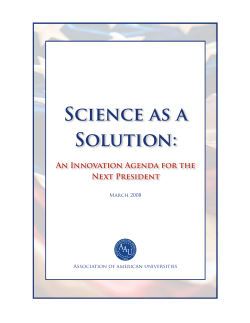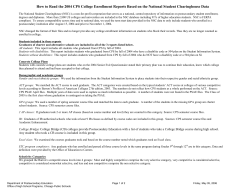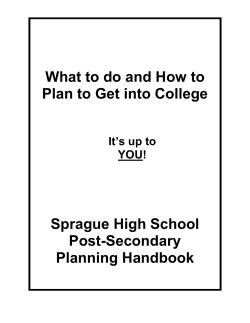
How to Make the Most of High School Workshop
How to Make the Most of High School Workshop Kunming International Academy Michelle LaPorte, Guidance Counselor I. Welcome a. College/university distinction b. What other KIA graduates have done after high school II. KIA High School a. “American style” b. WASC and NCCT accredited c. Graduation Requirements d. Course Offerings e. Transcripts (grades COUNT in high school) f. KIA School Profile III. What does KIA do to Help Students Academically? a. After School Tutoring: Monday – Thursday b. Policies for Extracurricular Activity participation & AP courses c. Edline accounts available for parents & students to track grades and assignments d. Teachers available for meetings. Contact teachers directly with questions or concerns. e. Academic/Behavior Concern Forms IV. College Entrance Exams (standardized tests) a. PSAT i. Wednesday, 16 October 2013. Required for all KIA grades 9-11 students (KIA covers costs) ii. KIA does a PSAT Overview Session for students (Wednesday, 11 September) and offers voluntarily PSAT Prep Sessions. iii. Excellent tool to use as preparation for College Entrance testing practice as well as just testtaking skills – this information will be sent home with students when test results are received in January iv. PSAT Workshop (Friday, 10 January 2014) – go over PSAT score reports and help students & parents understand how to best use the PSAT as a tool to prepare for SATs v. Access to College Board’s “My College QuickStart” vi. For more info: http://www.collegeboard.com/student/testing/psat/about.html b. SAT (Reasoning Test) i. Application/entrance requirement for most US colleges/universities ii. Measures critical reading, math and writing iii. Each category is given a score between 200-800 (also an essay score) iv. Many universities in other countries require students coming from an American style or international school to have a minimum SAT score v. SAT Reasoning Tests are offered 5 times this school year, students can take them as many times as they’d like but its STRONGLY recommended that every grade 11 student take the test during the spring vi. For more information: http://www.sat.collegeboard.org 1|Page c. SAT Subject Tests i. Designed to measure knowledge and skills in a particular area ii. Subject Areas: English, History, Mathematics, Science and Foreign Language iii. Students can choose different subjects to take iv. SOME universities will accept SAT Subject test scores and give college credit v. Offered the same dates as the SAT Reasoning Tests - Language Tests are only available at international test centers in November. Students can ONLY take SAT or SAT Subject tests on one test date. vi. For more information: http://sat.collegeboard.org/about-tests/sat-subject-tests d. ACT i. Many non-US schools will not accept ACT test scores ii. Measures students’ knowledge and abilities in: English, Mathematics, Reading, Science and Writing (optional) iii. Students planning to study in the US should take the test in the spring of grade 11 iv. For more information: http://www.actstudent.org e. TOEFL test i. Tests English level of a student whose first language is not English ii. KIA does not administer the TOEFL test iii. Recommended that students whose first language is not English take the test during the spring of their junior year iv. Some universities will accept a minimum SAT Critical Reading or ACT English score as meeting the English level requirement (must check with individual university) v. For more information: www.ets.org/toefl V. AP Courses a. What they are: Advanced Placement (College Board) courses that are taught at an American college level/British system A-levels. b. Advantages: higher level courses, weighted grade point average (GPA), passing mark on AP Exams can mean college credit, more internationally accepted and recognized, some universities have AP exam requirements for acceptance (mainly non-US universities) c. AP Exams i. AP Exams are all administered in May, dates set by College Board ii. AP Courses prepare students for the AP exams, although they are not required to be enrolled in an AP course to take the exam iii. AP Exam scores are given on a score of 1-5 iv. For US universities: many universities will accept AP Exam scores of 3, 4 or 5 and grant college credit v. For non-US universities: many universities require students coming from an American system to have taken and passed a certain number of AP Exams (not to be confused with taking the course). Important to check with universities in the country you are interested in going to! vi. For more information: https://apstudent.collegeboard.org/home 2|Page VI. Other Important Considerations in College Applications and Acceptance a. Diversity i. College campuses tend to value having a student body that represents a broad range of cultures and experiences ii. KIA students should use this to their advantage! Their high school experiences are not “normal” and that can be incredibly helpful to them as they apply to college b. Community Service i. Form available in guidance counseling office, KIA website, & Resource Guide ii. Any service that a student participates in that is giving to others (not peers) iii. High School Service Trip iv. Senior Service Learning Project v. Other opportunities in the community c. Activities i. Form available in guidance counseling office, KIA website, & Resource Guide ii. Any activity that students are involved in during high school iii. Sports, Clubs, Part-time Jobs, Youth Group, School or Community Programs (Christmas Program, Spring Play, Leadership Retreats, etc) iv. Students may also record Awards on this form v. Involvement in activities communicates to colleges that the student is an active member of society. VII. Post High School Plans a. College/University is NOT for everyone b. Value in taking a “Gap Year” i. Gain independence, some not ready for college, volunteer/serve, reacquire passion for learning, work/save money, etc ii. “Non-traditional student” c. Wise to think through future goals and be intentional about figuring out how to achieve those VIII. How to Choose a College a. Resources: websites, books, people, etc b. What is the student interested in pursuing? Majors? (In some countries, this decision is required upon application. In others – many students do not declare a major or change) c. College Visits: go to colleges, if possible d. Criteria to Consider i. Location (country, city, near relatives, climate, etc) ii. Size: of student enrollment and of classes iii. Admission policies/acceptance rates iv. Degree options v. Extracurricular Activities: clubs, sports, community service, music, drama, etc vi. Tuition/Cost 3|Page IX. Selecting a Range a. Factors in determining your range: check the percent accepted, compare SAT scores, meet minimum requirements, etc. b. REACH i. Colleges that normally accept students with GPAs and test scores higher than yours ii. Apply to 1-3 REACH schools c. POSSIBLE i. Generally accept students with profiles similar to yours ii. Apply to 2-4 POSSIBLE schools d. LIKELY i. Colleges for which you are an extremely strong candidate (based on admission/acceptance requirements) ii. Be sure that your LIKELY schools are those you wouldn’t mind attending iii. Remember, what may be a LIKELY school for you, might be a REACH school for one of your friends because the categories differ for everyone iv. Apply to 1-2 LIKELY schools X. How Colleges Choose Students a. Many universities in other countries look very strongly at test scores/grades b. Grades and Transcript i. Look at grades earned, as well as course selection ii. It is important to keep in mind that some universities require a certain number or level of courses a student takes their grade 12 year iii. Each college/university may evaluate transcripts differently. Since each high school uses different sets of grade weighting, most colleges recalculate each student’s GPA. They may drop weighted grades, certain classes (PE, Art, ect). c. Test Scores: many schools have minimum SAT, ACT, AP, etc. requirements. d. Is the student interesting? Is he/she recommended? i. Colleges want students who will enhance their campus ii. Teachers/Counselors/Pastors are often asked to write recommendation letters. These comments impact chances of admission. e. Essay i. Many colleges require applicants to submit an essay or personal statement as part of the application. They use this to determine what sets the student apart from other applicants. ii. Application essays should reflect a student’s creativity, individuality and potential as a participant in the university community. f. Extracurricular/Community Involvement i. Quality and commitment are more important than quantity ii. Leadership positions and increasing levels of responsibility in different activities are valued among college admission officers iii. Positively contributing to society (community service) shows initiative, service and leadership 4|Page XI. International Students a. Students are generally considered international students only if their passport is different from the country of the college they are applying b. Most important thing: talk to the specific university to determine international status and procedures XII. Non-US Colleges/Universities a. United Kingdom (UK) i. Applicants required to indicate course of study/major at the time of application ii. USAS (Universities and Colleges Admissions Services) website is extremely helpful: www.ucas.ac.uk b. Canada i. Colleges: focus on vocational and technical training. Universities: grant bachelor’s and advanced degrees ii. Helpful websites: www.schoolfinder.com, www.aucc.ca, http://www.uwaterloo.ca/canu/index.php and www.studyincanada.com c. Australia i. School year begins in February (southern hemisphere) ii. Helpful websites: http://studylink.com.au, http://www.idp.com d. Korea i. Helpful websites (in Korean): www.kosei.co.kr, www.daehakmoa.com, http://univ.kcue.or.kr, www.jinhak.co.kr e. Other Countries i. Helpful websites: www.universities.com, www.braintrack.com, http://univ.cc ii. Visit the websites for the specific schools you’re interested in XIII. Now What? (High School Preparation Action Plan) a. Start researching, planning, asking questions, etc. b. Every student is different, each situation unique. c. Don’t hesitate to ask for help – from guidance counselor and from college admission counselors! 5|Page
© Copyright 2025
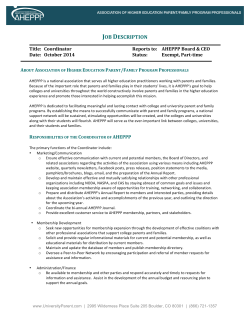



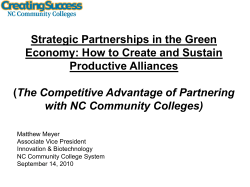
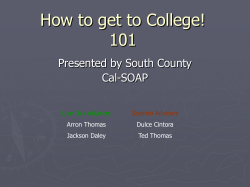





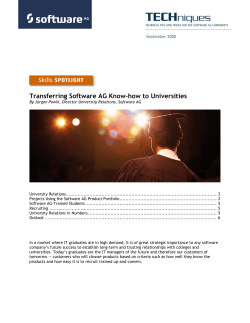

![Manual 1 Particulars of organization, functions and duties [Section 4(1) (b)(i)]](http://cdn1.abcdocz.com/store/data/000303028_1-5bbc312d7a1818b59c2437888790625e-250x500.png)



